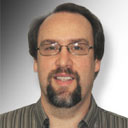David Sandner
Professor / English Graduate Adviser
Biography
David Sandner earned his Ph.D. in English Literature from the University of Oregon and his M.A. from San Francisco State University. His scholarly focus is the intersection of Romanticism, children's and YA literature, popular literature, and the fantastic. His recent book Critical Discourses of the Fantastic, 1712-1831, discusses the early history of critical theory on the fantastic from the essays of Joseph Addison to Mary Shelley's influential "Introduction" to Frankenstein. Earlier books include The Fantastic Sublime: Romanticism and Transcendence in 19th-century Children's Fantasy Literature and edited collections Fantastic Literature: A Critical Reader andThe Treasury of the Fantastic. His essays have appeared in journals includingExtrapolation, Soundings, The Journal of the Fantastic in the Arts, English Language Notes, and Mythlore and in collections including Literature Criticism: 1400-1800,Critical Insights: The Fantastic, The Best of Dissections: The Journal of Contemporary Horror, and J.R.R. Tolkien and his Literary Resonances. He is a member of SFWA, the professional organization of science fiction and fantasy writers. His creative work has appeared in anthologies and magazines. He has won awards for Outstanding Scholarship and Creative Activity from CSUF in 2007, 2008, and 2011.
Degrees
2000, Ph.D., University of Oregon
1995, M.A., San Francisco State University
1988, B.A., University of California at Santa Cruz
Research Areas
Romanticism, the imagination and fantastic literature and theory.
Courses Regularly Taught
British Romanticism, children's literature, popular literature.
Publications
Sandner, David. Critical Discourses of the Fantastic, 1712-1831. Ashgate Pub., 2011.
Sandner, David. Fantastic Literature : A Critical Reader. Praeger, 2004.
Sandner, David, and Jacob Weisman. The Treasury of the Fantastic : Romanticism to Early Twentieth Century Literature. Frog, Ltd., 2001.
Sandner, David. The Fantastic Sublime : Romanticism and Transcendence in Nineteenth-Century Children’s Fantasy Literature. Greenwood Press, 1996.
Sandner, David. “The Emergence and Evolution of the Fantastic,” Critical Insights: The Fantastic, edited by Claire Whitehead, 2012.
Sandner, David. “Meat Shots, Gorelets, Severed Hands and the Uncanny in Your Inbox: Michael Arnzen’s New Directions in Horror.” Dissections: The Journal of Contemporary Horror, 2012.
Sandner, David. “Joseph Addison: The First Critic of the Fantastic.” Journal of the Fantastic in the Arts, vol. 11, no. 1 (41), 2000, pp. 52–61.
Sandner, David. “Supernatural Modernity in Walter Scott’s Redgauntlet and James Hogg’s The Private Memoirs and Confessions of a Justified Sinner.” Critical Discourses of the Fantastic, 1712–1831, 1st ed., Taylor & Francis, 2011, pp. 107–16, https://doi.org/10.4324/9781315574974-10.
Sandner, David. “Between Eucatastrophe And Grace: J.R.R. Tolkien and Flannery O’Connor.” Soundings (Nashville, Tenn.), vol. 89, no. 1/2, 2006, pp. 171–98.
Sandner, David. “Theorizing the Fantastic: Editing Fantastic Literature: A Critical Reader and the Six Stages of Fantasy Criticism.” Journal of the Fantastic in the Arts, vol. 16, no. 4 (64), 2006, pp. 277–301.
Sandner, David. “’Joy Beyond the Walls of the World’: Entering the Secondary Realms of J.R.R. Tolkien’s The Hobbit and C.S. Lewis’s Narnia Chronicles.” J.R.R. Tolkien and his Literary Resonances, edited by Daniel Timmons et al., 2000, pp. 133-146.
Sandner, David. "'Habituated to the Vast': Ecocriticism, the Sense of Wonder, and the Wilderness of Stars." Extrapolation, vol. 41, no. 3, Fall 2000, p. 283. Gale Literature Resource Center, link.gale.com/apps/doc/A66121853/LitRC?u=csuf_main&sid=bookmark-LitRC&xid=1d930b55. Accessed 18 Apr. 2025.
Office Hours
Fall 2025
T 2:00pm-3:30pm
W 10:00am-11:30am

